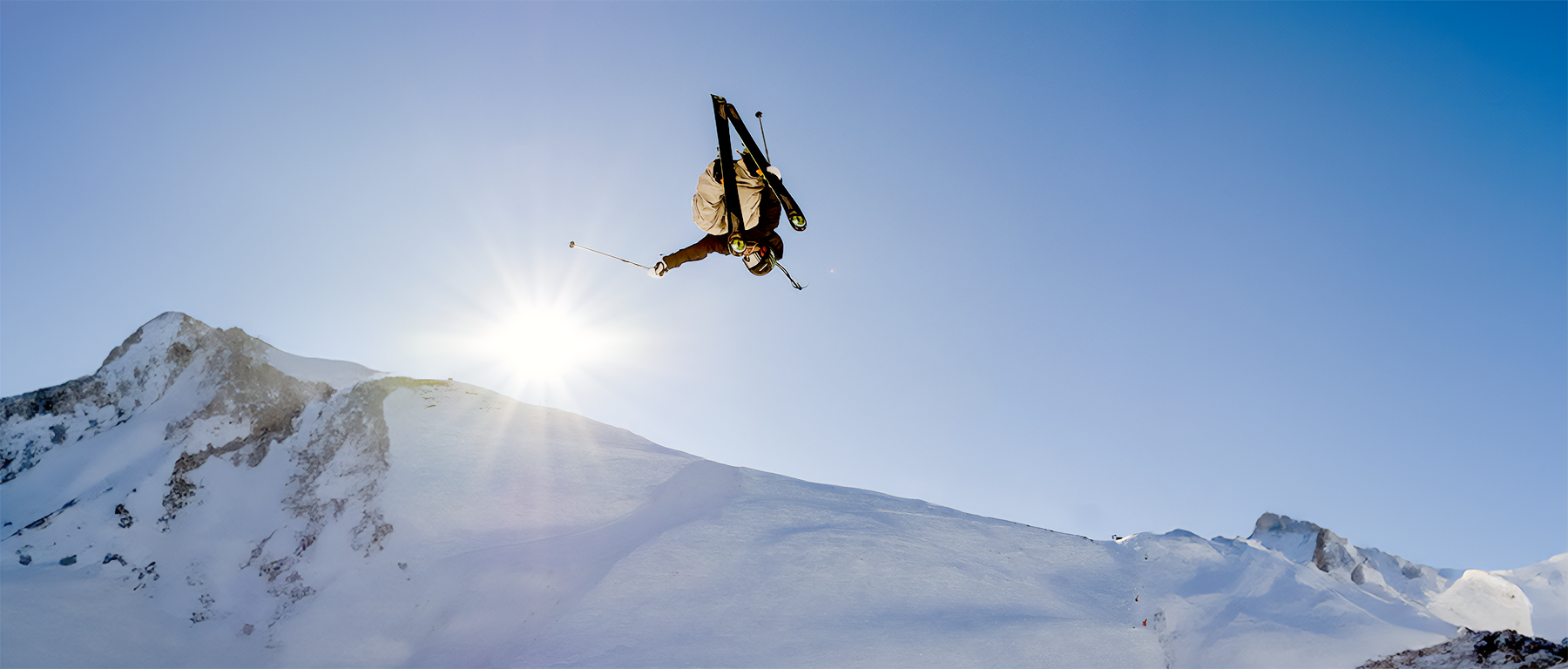Vertra Guide: How to Choose the Best Sunscreen for Skiing

Ready to hit the slopes? Here’s what to look for—and what to avoid—in a sunscreen.
With gloves, goggles, and boots on, you’re almost ready to conquer the slopes. But did you remember your sunscreen?
While you might not feel the heat in the thick of winter, it’s still important to wear sunscreen when it’s cold out to protect your skin from harmful ultraviolet (UV) rays that can cause sunburn, skin damage, and skin cancer. This is especially true when skiing or snowboarding: the combination of high altitudes and reflective snow increases your exposure to UV radiation.
So, what makes a sunscreen ideal for skiing and snowboarding? At Vertra, we’ve collaborated with world-class athletes to develop products that provide long-lasting sun protection even in the toughest conditions—including cold and snowy weather. In this article, we’ll break down why it’s smart to wear sunscreen during winter sports and what to consider when choosing a sunscreen for skiing and snowboarding.
Sunscreen in the winter: why you still need skin protection when it’s cold
During the summer months, you know to reach for sunscreen: long, hot, sunny days make it a no-brainer. But research shows we shouldn’t forget about sunscreen when the temperature drops.
While it’s true that UV rays tend to be a bit lower in the winter when the Earth tilts away from the sun, they are still powerful enough to damage your skin and cause a sunburn. Don’t let gray skies fool you, either: Clouds only decrease UV radiation levels by about 50%. Another factor to consider: If you’re at a higher altitude or snow is on the ground, the impact of UV rays will increase.
The bottom line: the National Cancer Institute recommends wearing sunscreen every day during peak daylight hours—from 10 a.m. to 4 p.m.—year-round, no matter the weather conditions or temperature. At Vertra, we recommend wearing a base layer of sunscreen via an SPF moisturizer, and then applying additional sunscreen such as our long-lasting face sticks, throughout the day when outside.
Why it’s important to wear sunscreen while skiing
Skiers, snowboarders, and alpine hikers are all at a higher risk of sunburn at high altitude levels with snowy conditions. In fact, UV radiation increases roughly 10% every 1,000 meters in altitude gained. That means at the top of a 10,000-foot mountain, radiation is 30% stronger than at sea level. And that’s just sunlight from above: rays reflected off snow can nearly double UV exposure.
Broad-spectrum sunscreen is designed to protect skin against UVA and UVB rays, which can cause a variety of problems. UVA rays account for 95% of UV radiation that hits the Earth’s surface, penetrating deeper into our skin and causing skin aging and wrinkles. Though it doesn't penetrate as deeply, UVB causes dangerous damage to top layers of skin, including sunburn, melanoma, and basal and squamous cell carcinoma. UVA and UVB cause lasting skin damage that can lead to skin cancer, the most common type of cancer in the United States.
How to choose the perfect sunscreen for skiing
To pick the best sunscreen before packing your gear bag, consider these factors:
-
Look for SPF 30 to 50:
Dermatologists recommend that you choose an option with SPF 30 or greater for thorough protection that blocks 97% of UVB rays. At Vertra, our sunscreens are between 30-50 SPF.
-
Choose broad-spectrum protection:
The Skin Cancer Foundation recommends using a broad-spectrum during any season to provide comprehensive protection against both UVA and UVB rays. -
Look for water resistance:
Water-resistant formulas are especially important while exercising in the winter, since sweat and snow can wash some sunscreen away. But remember: No matter how long a product claims its water resistance lasts, health professionals recommend reapplying sunscreen every 80 minutes to two hours, or after you sweat.
-
Decide whether you want chemical or mineral sunscreen:
Chemical and mineral sunscreens are both effective but work differently to protect the skin. Mineral sunscreen acts like a physical barrier and sits on top of the skin to reflect UV rays away. Chemical sunscreens contain active ingredients that soak into the skin barrier and quickly absorb harmful UV rays before they can cause skin damage. At Vertra, we offer both types of sunscreens, as well as hybrid products.
Tips for applying sunscreen while skiing
We all occasionally forget to reapply sunscreen. But some athletes go unprotected for hours at a time, solely because some sunscreens are so inconvenient to apply. During a day on the slopes, it can be time-consuming and awkward to wrangle off your gloves and mask, hold your poles, uncap a bottle, and rub in cream-based sunscreen. So how do you make sure you’re protected all day?
-
Start with a base moisturizer
Start your day with a moisturizer with SPF 30 or greater, like the Beach Break Daily Facial Moisturizer SPF 30. A moisturizer with SPF gives your skin much-needed hydration ahead of the cold, dry air on the slopes, and offers a first layer of protection against UV rays.
-
Opt for a sunscreen face stick
Face sticks are ultra-portable and easy to apply, even with gloves on. Plus, because they’re small and lightweight, face sticks can easily be zipped into a pocket for always-available protection. At Vertra, our face sticks include clear and tinted options with a range of SPFs.
-
Don’t forget often-missed spots
Oft-ignored areas of skin include the back of the ears and neck. A face stick is a helpful tool to easily target these areas. To protect your eyelids, we recommend wearing ski goggles.
-
Use lip protection
Lips in particular are a sensitive area often left uncovered during winter sports. Look for a water-resistant lip balm with SPF, like Vertra’s Coconut Lip Balm SPF 15, so you don’t have to worry about reapplying every time you hit the lift.
-
Reapply frequently
Dermatologists recommend you reapply at least every two hours to protect against skin damage and sunburns, no matter what SPF you use.
Why Vertra sunscreen is perfect for skiing and other winter sports
Offering a range of high-performance sunscreen options, Vertra products have been created by athletes for athletes. Our broad-spectrum, water-resistant sunscreen is tough enough to protect you while you ski or snowboard, but gentle enough to use as part of your everyday skincare routine. We recommend a two-step process: using our Beach Break Daily Facial Moisturizer SPF 30 in the morning and taking one of our face sticks with you as you adventure outside for easy application throughout the day.
